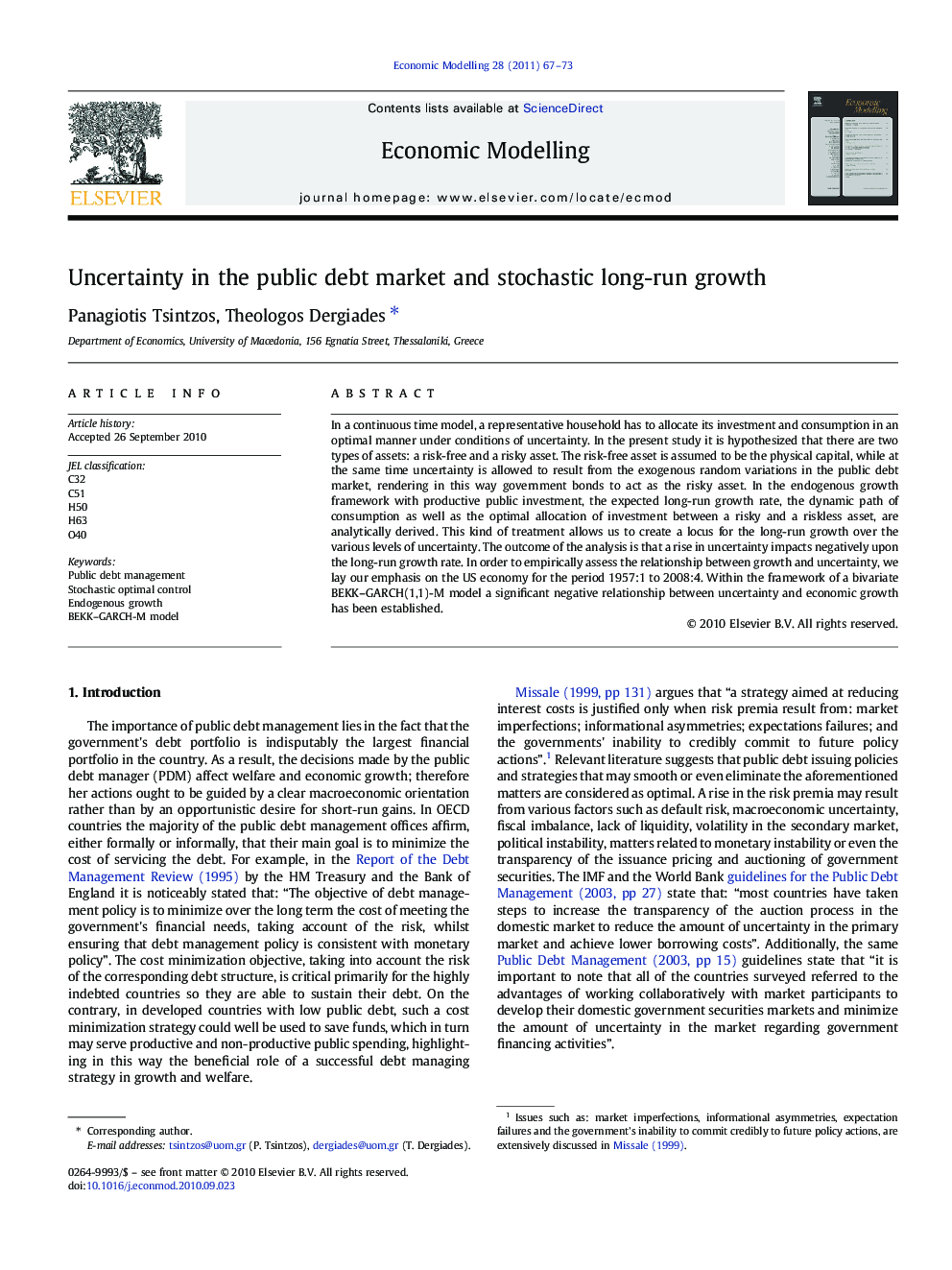| Article ID | Journal | Published Year | Pages | File Type |
|---|---|---|---|---|
| 5055768 | Economic Modelling | 2011 | 7 Pages |
In a continuous time model, a representative household has to allocate its investment and consumption in an optimal manner under conditions of uncertainty. In the present study it is hypothesized that there are two types of assets: a risk-free and a risky asset. The risk-free asset is assumed to be the physical capital, while at the same time uncertainty is allowed to result from the exogenous random variations in the public debt market, rendering in this way government bonds to act as the risky asset. In the endogenous growth framework with productive public investment, the expected long-run growth rate, the dynamic path of consumption as well as the optimal allocation of investment between a risky and a riskless asset, are analytically derived. This kind of treatment allows us to create a locus for the long-run growth over the various levels of uncertainty. The outcome of the analysis is that a rise in uncertainty impacts negatively upon the long-run growth rate. In order to empirically assess the relationship between growth and uncertainty, we lay our emphasis on the US economy for the period 1957:1 to 2008:4. Within the framework of a bivariate BEKK-GARCH(1,1)-M model a significant negative relationship between uncertainty and economic growth has been established.
Research Highlights⺠Bond market's uncertainty impacts negatively on the economy's long-run growth rate. ⺠An analytical value function is provided within the framework of the proposed endogenous growth model. ⺠Empirical evidence affirms the established theoretical negative relationship.
